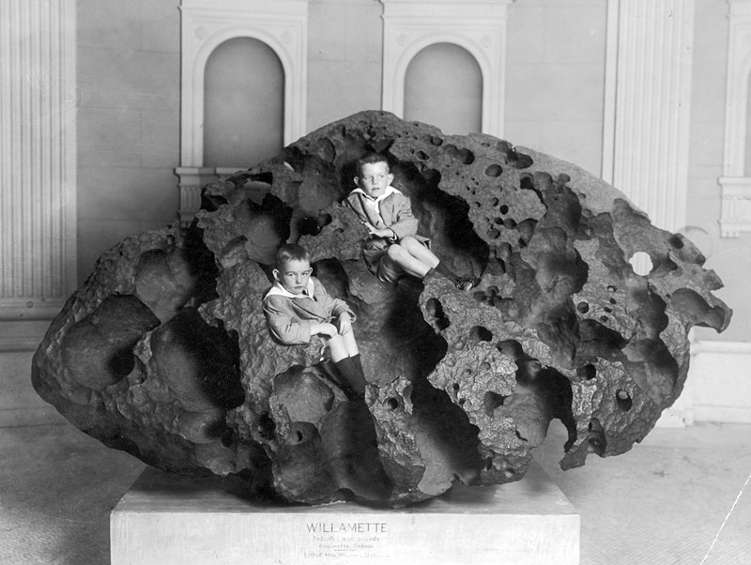






Turn of the century photo of children sitting on Willamette meteor, known as Tomanowos, a sacred visitor from the sky, to the Clackamas Indians. According to the American Museum of Natural History, where it now resides, it is billions of years old; part of the iron heart of a shattered planet which once orbited the Sun. AMNH, Rose Planetarium
meteor fails to sell at auction FOR SALE Macovich collection
The largest meteorite ever found in the United States, the Willamette is believed by scientists to be the iron core of a planet that was shattered in a stellar collision billions of years ago. The Meteorite crashed into Earth's surface thousands of years ago traveling at more than 40,000 miles per hour. The Museum purchased the Willamette Meteorite in 1906 and since then the unique scientific specimen has been on almost continuous display at the Museum and viewed by millions of visitors from around the world. The Willamette Meteorite is the centerpiece of the Cullman Hall of the Universe in the Museum's recently opened Rose Center of Earth and Space.
Known as "Tomanowos" to the Clackamas, who lived in the Willamette Valley before the arrival of European settlers, the Meteorite is revered by the Clackamas and their descendants. According to the tradition of the Clackamas, Tomanowos has healed and empowered people in the Willamette Valley since the beginning of time. The Clackamas believe that Tomanowos came to the valley as a representative of the Sky People and that a union occurred between the sky, earth, and water when it rested in the ground and collected rainwater in its basins. The rainwater served as a powerful purifying, cleansing, and healing source for the Clackamas and their neighbors. Tribal hunters, seeking power, dipped their arrowheads in the water collected in the Meteorite's crevices.